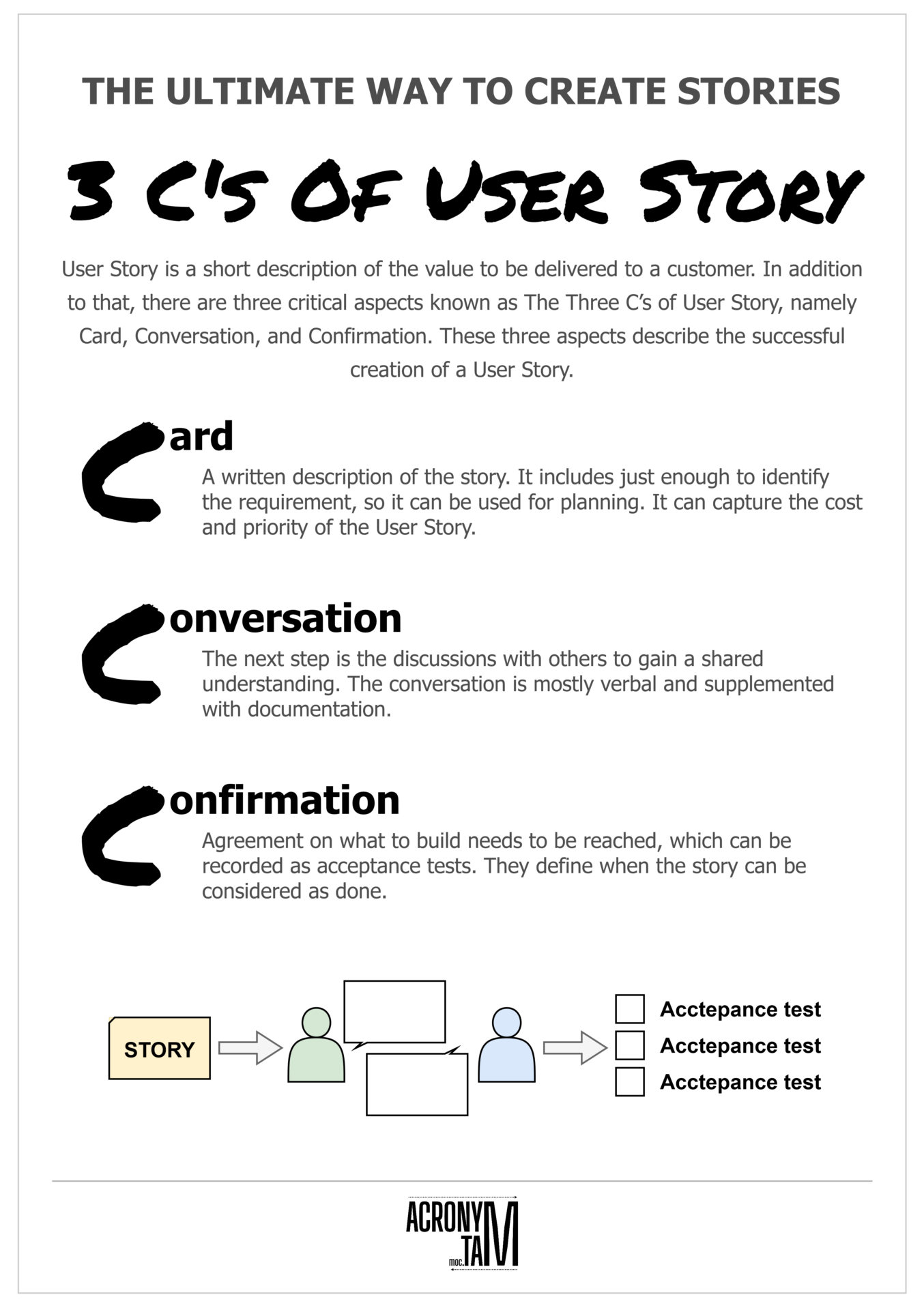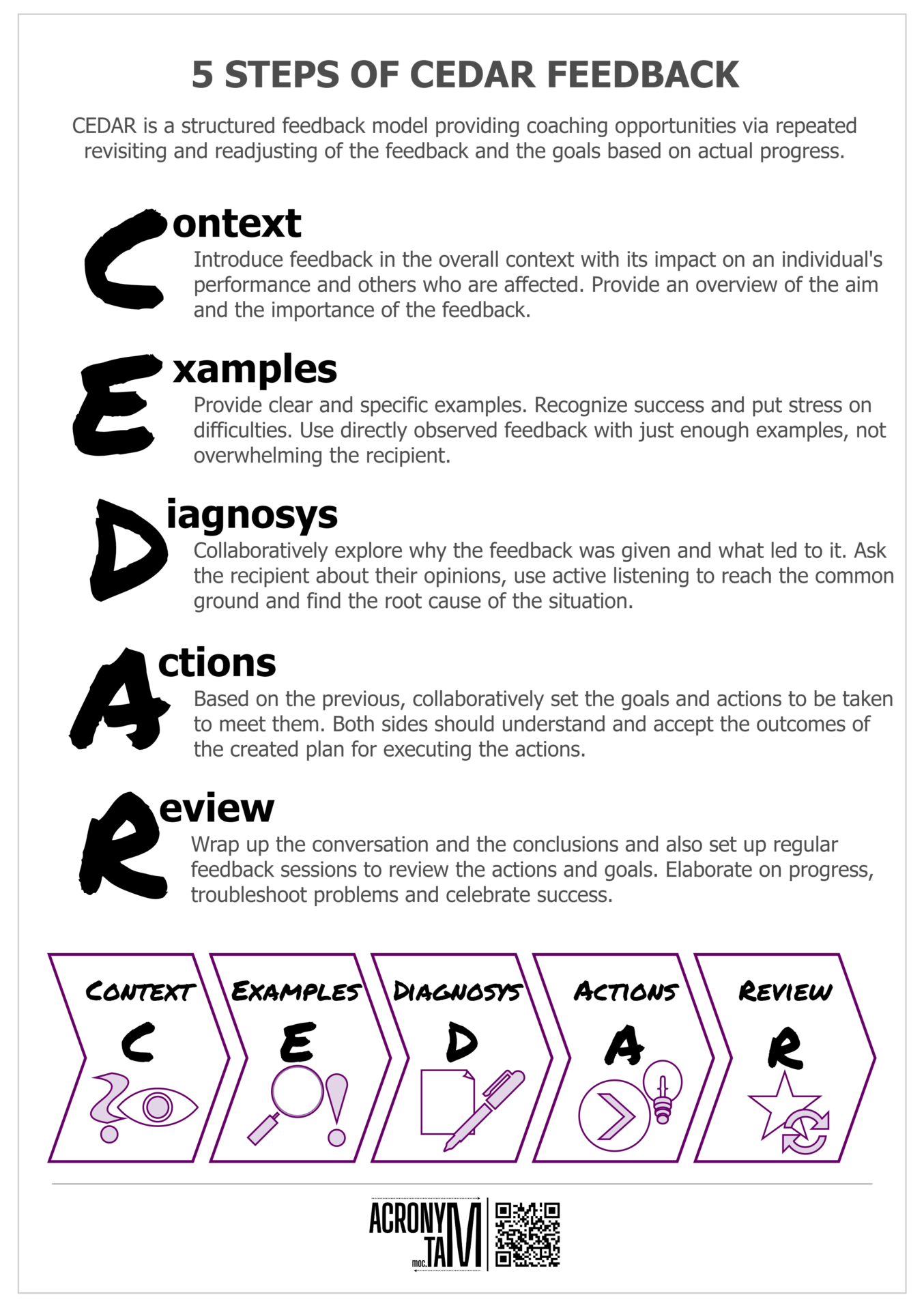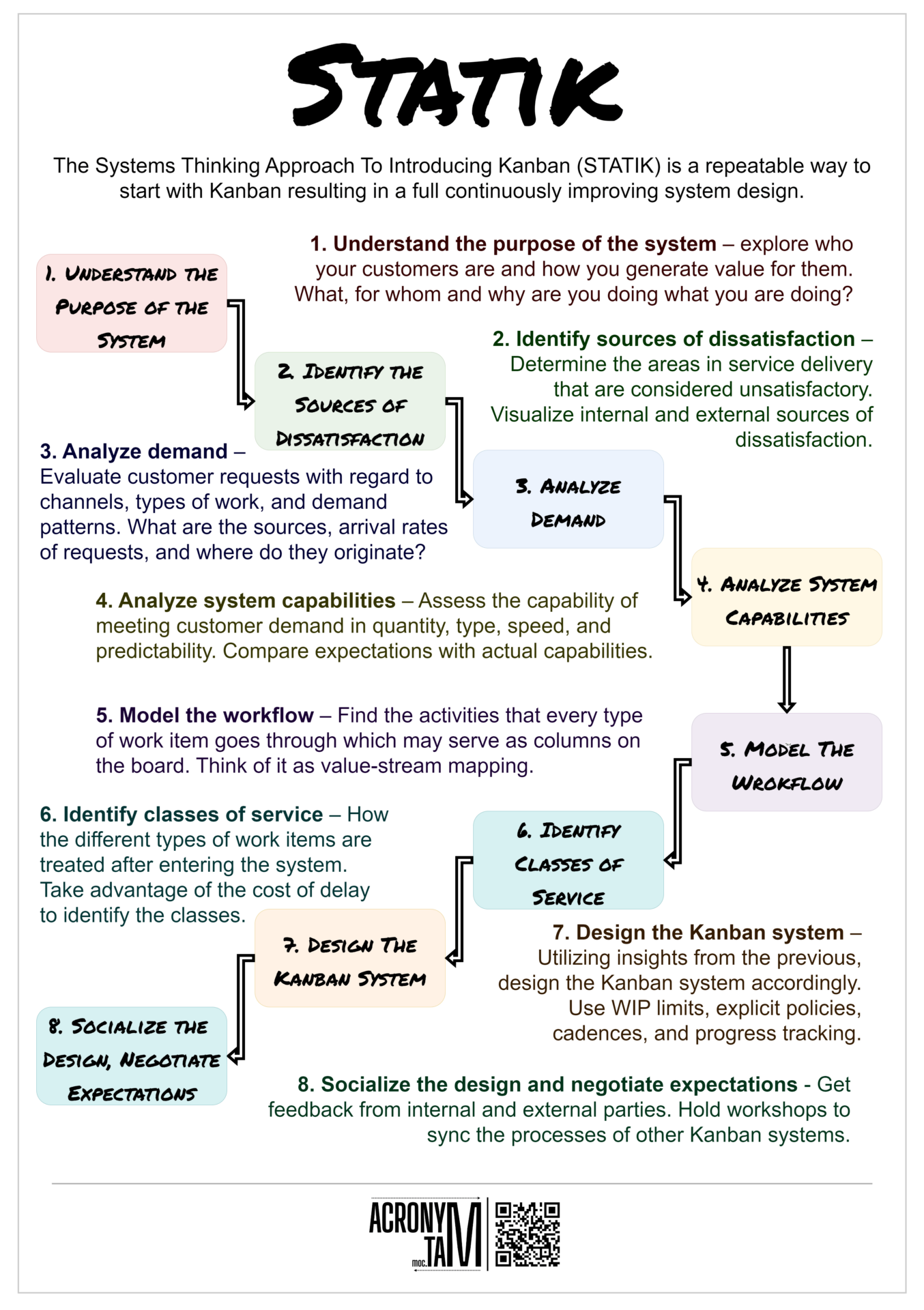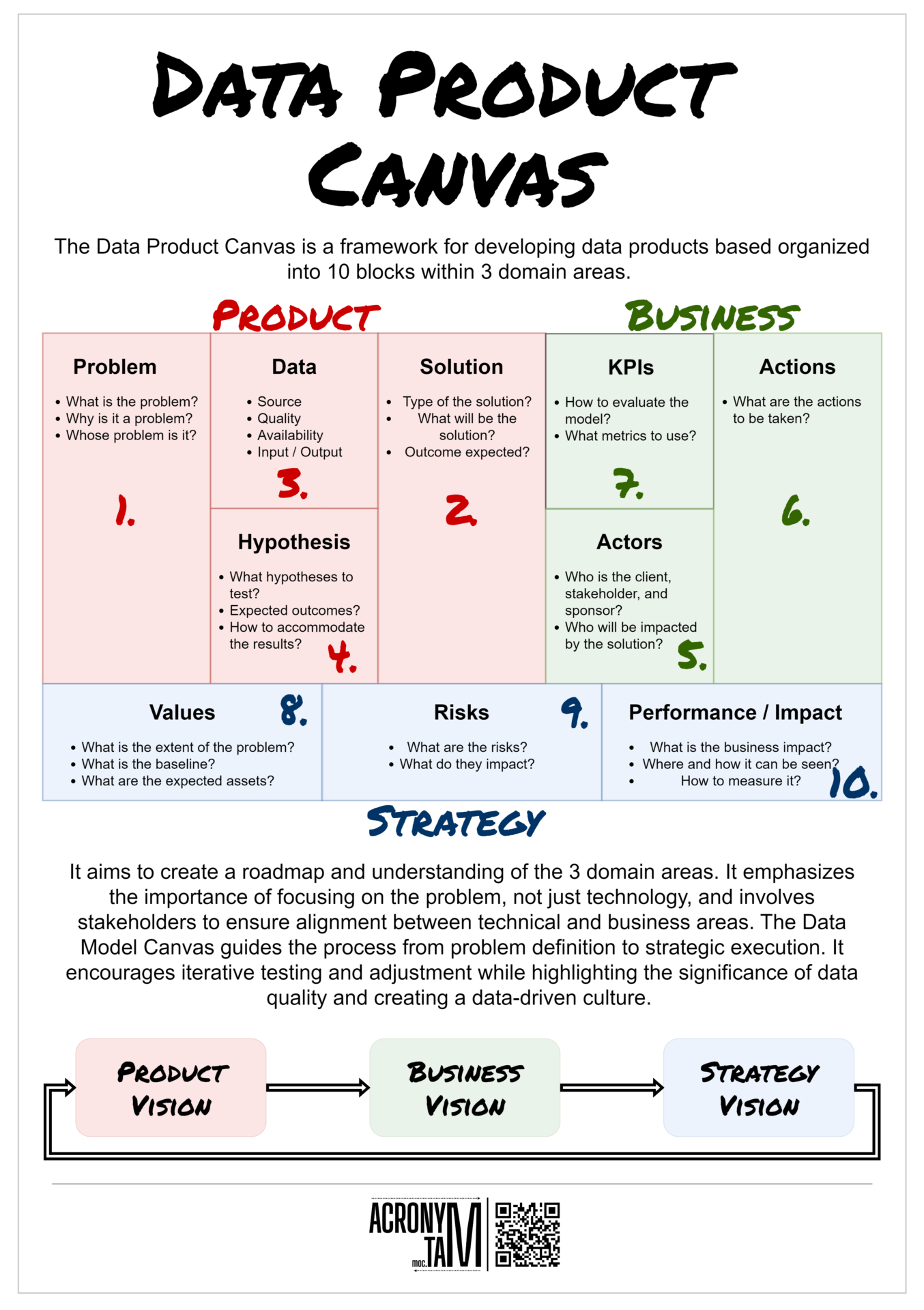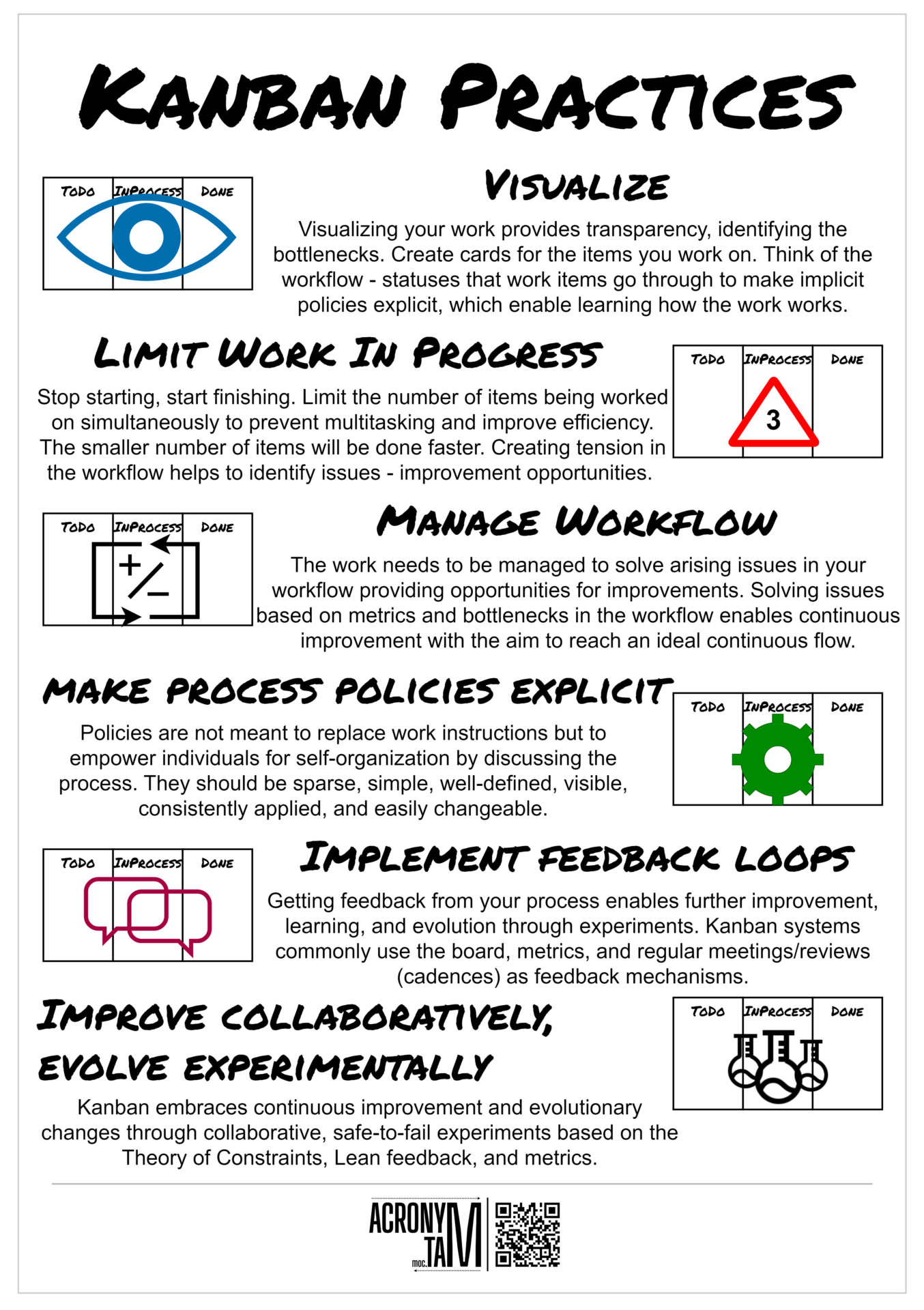Article
The Three C’s Of User Stor
User Story is a short description of the value to be delivered to a customer. In addition to that, there are three critical aspects known as The Three C’s of User Story, namely Card, Conversation, and Confirmation. These three aspects describe the successful creation of a User Story.
Card
A written description of the story. It includes just enough to identify the requirement, so it can be used for planning. It can capture the cost and priority of the User Story.
Conversation
The next step is the discussions with others to gain a shared understanding. The conversation is mostly verbal and supplemented with documentation.
Confirmation
Agreement on what to build needs to be reached, which can be recorded as acceptance tests. They define when the story can be considered as done.


